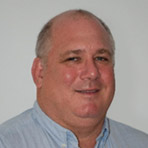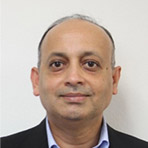TECHNICAL PROGRAM
(subject to change)
SESSIONS
SESSION ON NEW MATERIALS
Vipul Dave, Johnson & Johnson
Development of novel polymer systems has led to several innovations that have profoundly influenced the future of medicine. Polymers are widely used in many medical devices for short-term and long-term applications and the properties of these materials must be tailored for the intended use. There is always a need to modify existing materials or develop new materials to meet the challenging demands of new medical devices. The presentation will provide an overview of the selection criteria of materials that are used for medical applications, and examples will include materials that are used in cardiovascular, orthopedic, surgical and drug delivery devices.
Isaac Platte, Covestro
Medical Luer connector seal using the mechanical advantage of threaded collars to press a conical projection into a mating conical hole. The high hoop stresses generated can reduce the ability of plastic female to resist harsh medical liquids, such as disinfectants or drug solutions. Covestro has developed a test method proven to evaluate the chemical resistance of female Luers immersed in these liquids while being subjected to a range of sealing force. The method eliminates variability caused by Luer design or material friction and greatly reduces the number of samples required to establish a rank of chemical resistance.
Rick Finnie, M.R. Mold & Engineering
This presentation will outline the differences in designing products for silicone injection molding vs. plastic injection molding. Learn why some design issues make a product unmanufacturable and a slight variation of the design can make all the difference.
Ajay Padsalgikar, Abbott (SJM)
Biological stability of polyurethanes is an important property for the integrity of device functionality especially for long term implantable devices. The biostability of polyurethane materials has been a subject of intense research over the years and various methodologies have been used to predict and assess this property. Accelerated in vitro testing has been used to isolate degradation mechanisms and predict clinical performance of biomaterials. However, validation that in vitro methods reproduce in vivo degradation is critical to the selection of appropriate tests. High temperature has been one of variables proposed as a method to accelerate degradation. Correlation of such data to in vivo performance is poor for polyurethanes due to the impact of temperature on microstructure. This review looks at the mechanism of polyurethane degradation and the appropriateness of different methods that have been used by researchers.
Christian Herrild, Teel Plastics
Counterfeit medical devices are a major problem in some markets, especially with the rise of production and consumption in countries with historic counterfeiting issues. Counterfeit devices can damage the reputation of a medical device OEM and cause lost sales, but more critically they can be harmful to patients. While there are many technologies and techniques that can be used to help prevent counterfeiting or detect counterfeit devices, device manufacturers need an understanding of the market dynamics for counterfeit goods and the behaviors of companies making counterfeit devices to know how best to protect their products. The market dynamics for counterfeiting and some anti-counterfeiting technologies will be reviewed.
“Chip” Kurt Breitenkamp, Exponent
The market for wearable medical devices continues to grow based on the introduction of fast, lightweight technology with improved ability to analyze and rapidly communicate patient vital signs and, in the future, changes in sweat and blood chemistry. One common trait of wearable devices, including wearable medical devices, is long-duration contact on the skin. Since most devices are constructed using many types of synthetic polymers, there has been increased awareness of how plastic device housings, adhesives, coatings, among other materials, may impact the user's health over time during use. In this presentation, we will discuss how analytical methods and literature-based toxicological risk assessments can be used to understand the potential toxicity of extractable and leachable compounds from wearable devices in simulated end-use scenarios. We will describe common leachable compounds we’ve identified during our testing of wearables and potential risk mitigation strategies to employ during device development.
SESSION ON NEW PROCESSING TECHNOLOGIES
Charlie Martin, Leistritz
Developed almost 100 years ago for natural rubber/plastics applications, processes via twin screw extrusion (TSE) are used to continuously compound cutting-edge plastics formulations for medical device and drug delivery systems. There are many mixing devices, but it has become evident why TSE processing offers significant advantages as compared to other manufacturing techniques. The well-characterized nature of the TSE process lends itself to ease of scale-up and process optimization, while also affording the benefits of continuous manufacturing. A comparison of the similarities and differences for a plastics format TSE and “GMP” class configuration will be presented.
Melissa Butrie, 3D Proscan
CT scanning is being used for various industrial applications and enabling significant improvements in terms of process efficiency. It allows customers to perform defect analysis non-destructively, compare manufactured parts to CAD models or other parts, execute first article inspections and validations in less time, and reverse engineer models from legacy parts. Examples of real world scenarios, including a time and cost comparison for various dimensional inspection methods and a brief overview of the reverse engineering process, will be given. Some of the ways in which CT scanning ties into Additive Manufacturing will also be discussed.
Marcel Fenner, Priamus
The use of cavity pressure and cavity temperature signals to monitor and control the injection molding process is state of the art in the production of technically sophisticated injection molded parts. The 4th industrial revolution is opening up untold possibilities in the automation of administrative, technical and planning processes. Such control systems are an ideal source of data of the highest relevance and information density. Depending on the target to be achieved information from many different machines and devices can be collected and analyzed. Some examples are dryers, mold temperature controllers, hot runner controllers, robots, molds, injection molding machines and any other machine or devices with network capability. Specific gains of such systems can be a faster recognition of quality trends and correcting it accordingly, traceability, remote monitoring and controlling or the data is the base for better production planning.
Suhas Kulkarni, Fimmtech
Over the last several years, the requirements for medical products has changed in two ways. First the required volume of production has increased some components and assemblies by a significant amount and second, the products have become much more complicated with tighter tolerances and requirements. All this has led to increased developmental times, increased mold cavitation, increased inspection and increased costs. Understanding the molding parameters and performing a Designed Experiment (DOE) based on the molding factors can significantly reduce times and costs for development. The talk will present proven ways with some case studies and provide a road map that one could easily implement on their next project.
Steve Kurtz, Exponent
We present the properties of a new polyolefin medical grade, GUR® 1001, which is a linear HMWPE that can be injection molded. Properties will be compared with GUR® 1020 UHMWPE. Biocompatibility data will be presented as well as an injection molding processing guideline. It will be shown that, despite its still relatively high molecular weight, injection molding of GUR®1001 can be performed without degrading the material. Resulting properties of molded parts are comparable to compression molded parts of GUR® 1001. Furthermore, e-beam irradiation at different dosages has been performed to analyze property changes. Due to its lower molecular weight, the mechanical properties of GUR® 1001 do not reach the same level of as UHMWPE, but in certain medical applications the extraordinary wear resistance and impact strength are not required to the extent UHMW-PE grades offer.
Kai Wender, Arburg
Rapid Prototyped parts through Freeforming capabilities with exactly the material that the part will be produced in mass production. Discussion on how this technology works and how it can help to quickly go through the Prototype stage and convert the generated information into the final product. Further we will review the capability of Freeforming and individualizing mass produced parts quickly in very unique ways.
6:00 PM
 Vipul Dave - Johnson & Johnson
Vipul Dave - Johnson & Johnson
Dr. Vipul Davé joined Johnson & Johnson in 1996 and held several roles of increasing responsibility within the Medical Device and Consumer Sectors of the company. He is currently a Research Director and Fellow in the Global OTC Technology Group in Johnson & Johnson Consumer Inc. and is responsible for leading the development of novel oral pharmaceutical dosage forms and external innovation. Vipul's research has focused on the fundamental understanding of structure-property-processing relationships of polymers for health care applications.
Vipul is an inventor of over 28 granted US patents and 46 US patent applications, authored over 30 publications in journals and books, and presented over 70 papers at technical conferences. Vipul received his BS in Textile Engineering from University of Baroda, an MS in Polymer Science from University of Massachusetts Lowell and a PhD in Materials Engineering Science from Virginia Tech. Vipul is a Fellow of the American Institute for Medical and Biological Engineering and Society of Plastics Engineers and a Board Member of the SPE Medical Plastics Division.
 Isaac Platte, Covestro
Isaac Platte, Covestro
Isaac Platte graduated from Michigan State University with a BSME. He began his career at Covestro as technical trainee rotating through Polyurethane and Coatings business units. He joined Application Development in Polycarbonates after the trainee rotational program. His main responsibilities include helping customers with part and mold design as well as evaluations through structural and injection molding simulation.
 Rick Finnie, M.R. Mold & Engineering
Rick Finnie, M.R. Mold & Engineering
In 1985, Rick Finnie opened M.R. Mold & Engineering with one employee. Fortunately for Rick, he had a number of contacts within the industry and he steadily grew his business.
Rick's journey ultimately leading to M.R. Mold success began within his father's line of work, which was in tool and cutter grinding. After his dad closed his business in 1977, Rick worked for eight years for Kipe Molds. Originally housed in a 1,500-sq.-ft. building in Brea, M.R. Mold was not going to be just a mold maker but would design and build anything anyone needed, a complete machine shop, which they are today.
Today within 16,500 sq.ft, M.R. Mold & Engineering is known globally for its EXPERTISE and EXPERIENCE in liquid silicone rubber (LSR) and gum stock silicone. Although known for its LSR capabilities, M.R. Mold has been building plastic injection molds for its customers for 33 years. M.R. Mold believes in 'American Made' and they are celebrating 28 years in business in Brea, CA.
 Ajay Padsalgikar, Abbott (SJM)
Ajay Padsalgikar, Abbott (SJM)
Ajay graduated with a degree in Polymer Engineering from the University of Poona, India in 1990. He then completed a PhD from Clemson University, SC, USA in 1996. In his PhD, he worked on the micro-rheology of polymer blends and their resultant structure formation in the process of fiber spinning. His first work assignment after his education was at the Research & Technology Center in Everberg, Belgium at ICI Polyurethanes. At ICI, Ajay worked mainly on the processing of polyurethanes, thermoplastic as well as thermoset. In 1999, ICI Polyurethanes became Huntsman Polyurethanes. Ajay's work continued in the field of processing of polyurethanes but became more focused on computer modelling and simulation of the different processes including polyurethane synthesis.
In the middle of 2002, Ajay joined AorTech Biomaterials in Scotland from where he was transferred to Australia in late 2002. He served as the Chief Scientific Officer of the company and various projects that he was involved with included polyurethane bulk and solution synthesis, chemical engineering of the synthesis of raw materials for polyurethanes, processing of polyurethanes for medical devices.
Ajay joined St Jude Medical in December 2012 as a Senior Principal Scientist and has been involved with material development, application and characterization in the cardiac space. St. Jude Medical was acquired by Abbott in 2017.
Ajay has more than 30 published scientific papers and 10 patents. In 2017, a book titled 'Plastics in Medical devices for Cardiovascular Applications' authored by Ajay was published by Elsevier.
 Christian Herrild, Teel Plastics
Christian Herrild, Teel Plastics
Christian Herrild has a diverse background in the plastics and chemical fields. He currently acts as Teel's Director of Growth Strategies. He researches and evaluates new markets and technologies for Teel and helps set Teel's strategic plan. In addition, he manages the branding and marketing efforts for Teel. Prior to his current position, Christian was Director of Sales and Marketing for Teel Plastics and managed its sales force and customer service area. Christian works closely with Teel's technical team in this role, including new product launches with key customers. Christian also serves as in-house counsel for Teel and handles nondisclosure agreements, contracts, sales agreements, and licensing.
He graduated cum laude from University of Wisconsin - Madison Law School in 2012 and earned his MBA from the UW School of Business, with a specialization in Entrepreneurial Management, in 2011. In addition, he has a strong technical background, with undergraduate degrees in both Mathematics and Chemistry from Marquette University, where in won several awards for his chemistry work as an undergraduate. Prior to his advanced schooling, he spent about two years as an industrial synthetic chemist working primarily with polynucleotides.
 “Chip” Kurt Breitenkamp, Exponent
“Chip” Kurt Breitenkamp, Exponent
Dr. Breitenkamp provides a wide range of chemistry, polymer science and surface science expertise applicable to medical devices, consumer electronics and intersecting products including wearable electronics, point of care diagnostics and other integrated devices. His extensive polymer chemistry and polymer materials characterization knowledge has supported product development at all stages including design, materials selection and performance validation.
Prior to joining Exponent, Dr. Breitenkamp co-founded Intezyne Technologies, a biotechnology company focused on the development of advanced, polymer nanoparticles for targeted drug delivery. After his tenure at Intezyne, Dr. Breitenkamp joined The Scripps Research Institute where he initiated efforts to develop new classes of conductive polymers and hybrid polymer-virus nanoparticles.
A prolific innovator, he is listed as an inventor on 21 patent families that include 26 issued US patents. He received a Ph.D. in Polymer Science and Engineering from the University of Massachusetts - Amherst and a B.S. in Polymer Science from the University of Southern Mississippi.
 Charlie Martin, Leistritz
Charlie Martin, Leistritz
As President/General Manager of Leistritz Extrusion, Charlie is responsible for the management of a company that provides manufacturing equipment and engineering services to the plastics, medical and pharmaceutical industries in the USA and around the world.
Extensively published in trade publications, textbooks and journals, Charlie has delivered 200+ technical presentations at wide-ranging international events and is the co-editor of the textbook Pharmaceutical Extrusion Technology, a seminal book on a new manufacturing technology that has been embraced by the pharmaceutical industry. He has also been awarded 2 extrusion related patents.
Charlie currently serves on the Board of Directors for the Society of Plastics Engineers (SPE) Extrusion Division, the Polymer Processing Institute @ New Jersey Institute of Technology and also on the Technical Advisory Board for Teel Plastics. Previously he has held the Technical Program Chairman and Chairman positions for the SPE Extrusion Division.
Charlie earned his undergraduate degree from Gettysburg College and MBA from Rutgers University.
 Melissa Butrie, 3D Proscan
Melissa Butrie, 3D Proscan
With nearly a decade of quality experience in the biotech and life science industries, ranging from custom peptide development to cGMP, ISO regulated membrane and filter testing, Melissa has a broad knowledge of products and processes. Be it R&D or controlled manufacturing settings, solving problems in order to provide the highest quality products as efficiently as possible has always been a passion and as a result, she obtained her ASQ Certified Quality Engineer certification. Now through the use of industrial CT scanning, she looks forward to helping others achieve the same high quality, product realization goals.
 Marcel Fenner, Priamus
Marcel Fenner, Priamus
Marcel Fenner started his career with an apprentice ship as plastics technician with specialization in injection molding. Later on he graduated from the University of Applied Sciences and Art Northwestern Switzerland in Mechanical Engineering and Plastics Engineering.
After his graduations he received further experience working as a process engineer and setting up a department for mold trials and process development for a company specialized in insert molding in Switzerland. In 2000 he was transferred to the USA to setup a production for that company in Tennessee for supplying the Automotive industry in the NAFTA region.
Prior to joining PRIAMUS he had worked at EMS-Grivory, a resin manufacturer specialized in polyamides. He setup the department for Application Development and Technical Customer Service in China. In his position as Application Development Manager he was also in charge of training and developing the engineers in the Asia/Pacific region.
Fenner started with PRIAMUS System Technologies in January 2013 in Switzerland as Technical Manager and joined the North American subsidiary in August of that year. He was appointed President of that operation in June 2014.
 Suhas Kulkarni, Fimmtech
Suhas Kulkarni, Fimmtech
Suhas Kulkarni is the president of FIMMTECH Inc., a firm that specializes in services and training related to Plastic Injection Molding. Suhas earned his Master's in Plastics Engineering from the University of Massachusetts, Lowell and a Bachelor's in Polymer Engineering from the University of Poona, India.
He has 24 years of experience as a process engineer. He is the author of the book 'Robust Process Development and Scientific Molding' published by Hanser Publications. He also a contract faculty at the University of Massachusetts at Lowell. He is also the author of several papers and articles. His website is www.fimmtech.com.
 Steve Kurtz, Exponent
Steve Kurtz, Exponent
Dr. Kurtz is a Corporate Vice President and the Director of Exponent's Biomedical Engineering practice. He serves as a part-time Research Professor and Director of the Implant Research Center at Drexel University's School of Biomedical Engineering, Science, and Health Systems. Dr. Kurtz has expertise in the clinical performance of polyethylene, ceramic, and metal-on-metal hip implants. His professional career has involved the evaluation of medical device technologies, from a combined analytical, experimental, and clinical perspective.
His research activities have emphasized real-world clinical performance of medical devices, including orthopedic, spine and cardiovascular implants, as assessed by human implant retrieval specimens and national health care databases; mechanical behavior of synthetic biomaterials; contact mechanics of artificial joints; and structural evaluation of bone-implant systems.
Dr. Kurtz is active in many professional societies, including the American Academy of Orthopedic Surgeons, the American Association of Hip and Knee Surgeons, the Hip Society, the Knee Society and the American Society for Testing and Materials (ASTM). Dr. Kurtz has edited eight books and written over 210 journal articles and 470 conference abstracts. He is the founding editor of three educational websites: the UHMWPE Lexicon; the Medical PEEK Lexicon; and the Medical Ceramics Encyclopedia. He has co-edited STP 1591: Modularity and Tapers in Total Joint Replacements for the ASTM in 2015 and recently completed the UHMWPE Biomaterials Handbook, 3rd Edition, which was published in 2016.
 Kai Wender, Arburg
Kai Wender, Arburg
Kai started his formation in 1985 with a three-year study becoming a Plastic Technician followed by the two-year formation to an Application Engineer in mold injection.
He worked for two years in the molding department of Schmidt Feintechnik / Germany, moved to Arburg / Germany into the Application Engineering for five years followed by five years in the process and machine development for optical storing devices. In 2000, he moved to Brazil, became the Technical Manager in the new founded Brazilian subsidiary and assumed in 2006 the position of the Managing Director of Arburg Brazil.
In 2016, he moved to the U.S. to assume the West-Coast Business for Arburg / USA responsible for the Irvine Technology Centre.




